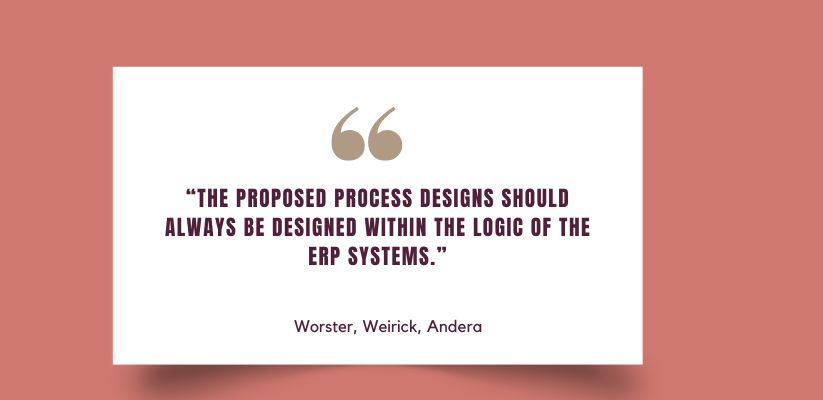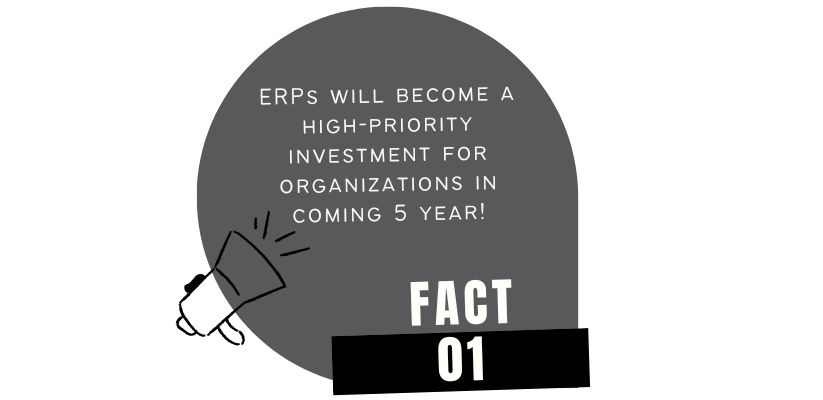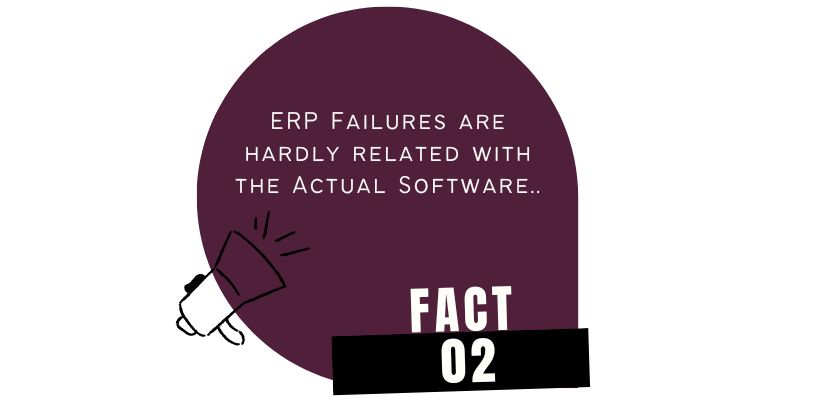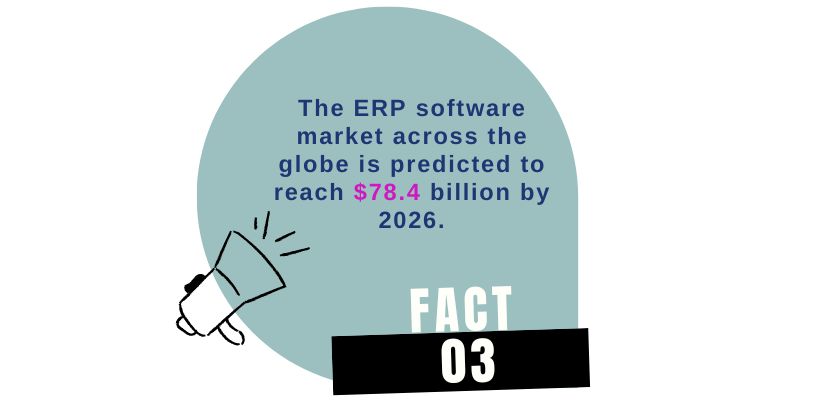Summary: ERP Enterprise resource software is a vital tool for businesses which helps integrate business operations while making the functions even more smooth and flawless. However, it is quintessential to know the steps of choosing the proper ERP software which will suit your business requirements. This blog will talk about the crucial 12 steps to consider before selecting the right ERP software.

There is no doubt that ERP (Enterprise resource planning) systems are the mainstays of modern organizations. When it comes to answering what is ERP system then it is clear that ERP systems offer higher flexibility and integrate business functions, they can help businesses hugely to stay compliant in the competitive environment. The manufacturing sector has seen great supply chain as well as traditional business operations disruptions due to the pandemic.
If your business is experiencing a limp with legacy or has a few different concerns, it might be a perfect time to invest in repairing how your business has been operating.
What is enterprise resource planning?
So, while explaining what is an ERP system we must say that ERP is software that involves technologies that companies used to integrate business operations. Through this, users can integrate with the single interface and can share critical information while allowing extensive data collaboration.
Steps to select the right enterprise resource planning ERP
Step 1: Rectify the operational errors
The most important step of enterprise resource planning system selection is to rectify the issues. Suppose you are conducting an inventory through spreadsheets and are transferring all the inventory data manually to the accounting software. Undoubtedly, this must be taking much time and full of errors that couldn’t add some value. So, the best solution is to get a well-managed cloud-based ERP system that can integrate accounting and inventory. Additionally, you should review all business functions and see if there are any other functions that require a double entry or is there something that needs improvisation in the automation.
<<Also Read: How to use ERP software?>>
Another fact of an ERP selection process to consider is while undergoing vendor selection is that large businesses come with a never-ending list of business needs. And most vendors assure you that they can satisfy your requirements. But, you should always stick to those vendors specifically that improve the critical business functions including cost, time, and training.
Step 2: Get the proper amount from major stakeholders
For better results, the employees, as well as stakeholders, should be inspired to transform and take part in evaluation functions. It is also important to remember that the ROI does not come just from the cost savings. When processes are enhanced through automation, the executives can easily work smarter. Moreover, time-consuming tasks are eliminated while offering higher customer satisfaction, employee retention, and high productivity.
Step 3: Ensure the system is reliable
To contribute a major role in onboarding an advanced ERP enterprise resource planning ERP system, it is highly recommended that you hire a stakeholder. There lies a logic behind this. The particular stakeholder can inspire others to get successful in ERP implementation. Hence, having an experienced person during selecting the ERP systems is a must.
Step 4: Get an experienced product person
An ERP system is the main infrastructure that is required to stay reliant to grow with the company. Seek an open, modular, and flexible system. The system should go in sync with other systems. It might include integrating with suppliers for JIT manufacturing to easily integrate with the consumers.
On the other hand, you should check if the system is modular enough to see the advanced functionality of the manufacturing advances. Also, you should check if the enterprise resource planning ERP system can grow as the business improves.
Step 5: Check whether ERP systems have mobile access
You should check if the mobile access is linked to the desktop browsers or if it is just an application specifically designed to check the desktop view. The motto of ERP software having mobile access is that your customers should be equally productive on tablets as well as smartphones when compared to office desktops.
Step 6: Make sure the ERP software is easy to use
Manufacturing ERP enterprise resource planning software has a wide range of users. However, the user interface should be precisely structured and intuitive to its use. A well-designed interface will however help enhance employee satisfaction along with high productivity.
Usually, UI/UX is the most critical factor when choosing an ERP solution. If you are having a user-friendly ERP with great-designed dashboards helps build better productivity and efficiency among employees.
Step 7: Select the appropriate deployment option
An ERP system includes a wide array of users right from the cloud, solutions, and hybrid deployment solutions. These solutions have enhanced points whereas the benefits are far different from the on-site solutions. These benefits include high expense which gets minimized later as cloud systems function on a pay-as-you-go model.
One of the benefits of ERP to consider is that the IT staff gets reduced since the functions are well operated by the software and vendor which is always active. Also, the cloud-based systems are greatly scalable and reliable that offer a high range of advantages to their users.
Step 8: Authenticate support & training options
Before selecting the right ERP software, you should always check if the vendor has previously trained a group of people in the business. It is because the efforts of the vendor will be complemented by advanced training availability.
However, it is mandatory to develop training timings with the vendor while allowing staff to commit to the training schedule. It is a simple concept that if nobody knows how to run the ERP software then it is definitely not worth investing time and resources into it.
Step 9: Select a vendor who knows your business requirements
For most businesses, transforming to a new ERP software might need some outside help. This could happen either due to IT staff restrictions internally, a shortage of skills, or even due to time pressures. However, it all depends on whether you are partnering with any ERP vendor, with a systems integrator associated with ERP vendor or with a single technology consultant or a reseller.
Do not choose a vendor who just gives you a tech-speak while elaborating the features of their ERP solution. Look at the real side of it and then take the final decision. Also, it is necessary to check if the vendor understands your business requirements. It is always better to have such vendors who would help resolve your issues accurately.
Step 10: Get a demo prior to the initial process
In some cases, businesses get the entire vendor selection procedure and then ask the vendor to conduct a demo that showcases the employees working of ERP software. However, as per the expert suggestions, better planning is to ask a couple of vendors to give a demo at the starting phase and see how your employees are responding to the new system. See if the new system has some feedback or if there are some restrictions that are being imposed on employees without any prior notification.
Step 11: Make the best of the agility
Usually, legacy ERP software is treated as the most inflexible one that cannot be updated with the business since they are designed in a complex way. Since there has been an agile software development process, companies have been improving. Through no-code and low-code alternatives, businesses can make improvements to business operations without hampering the base ERP software. However, to get these things in place, companies must have appropriate governance.
Step 12: Make a wise decision
While selecting an ERP system, it is a must that you check hidden costs in the implementation process. You should also analyze before finalizing contract navigation while predicting the go-live date.
Remember that before you start defining the ERP selection criteria it is a must that you should chalk out all the necessary requirements for your business and make a wise decision. Without clear definitions, choosing ERP software would be difficult.
A quick glance at important questions for Choosing Enterprise resource planning software-
Now, let us see a few questions you must think of before purchasing ERP software.
- Know the modules you hold
- Do you have mobile access?
- Is there any scope for advanced technologies?
- Can your ERP system be easily integrated with other tools at your workplace?
- Do you give industry-related solutions?
Down the Line
An ERP software implementation might be a tedious task specifically for those businesses having outdated functions to fulfil the current enterprise stacks. However, the above-mentioned steps will help your business get the most appropriate ERP vendor while implementing a new system within a short amount of time and increased the success graph.







